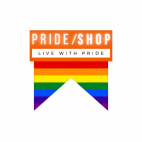Understanding Pinkwashing: Meaning, Impact, and Examples
What Does Pinkwashing Really Mean for LGBTQ+ Visibility?
The term pinkwashing is showing up more and more in conversations around activism, pop culture, and corporate responsibility—but what does it actually mean?
Pinkwashing blends the idea of “pink”—a color associated with LGBTQIA+ pride and visibility—with “whitewashing,” a term used when negative truths are hidden through superficial positivity. In essence, pinkwashing happens when businesses, governments, or other institutions publicly advocate for LGBTQ+ rights in a performative way—often as a PR strategy to distract from less progressive or even harmful practices happening behind the scenes.
This guide provides a clear explanation of pinkwashing, its consequences, and real-world examples drawn from marketing, politics, and entertainment.
What Is Pinkwashing?
Pinkwashing is the strategic use of LGBTQ+ support messaging to enhance public image, gain consumer trust, or deflect criticism—without offering real support to the community.
Whether it’s a company displaying rainbow logos during Pride Month while funding anti-LGBTQ+ politicians, or a government promoting queer rights to overshadow other human rights abuses, pinkwashing leverages LGBTQ+ visibility for gain—with little substance behind the message.
Key Features of Pinkwashing
- Symbol-driven marketing: Rainbow logos, inclusive slogans, and Pride-themed ads.
- Seasonal participation: Typically limited to Pride Month.
- Lack of internal change: No LGBTQ+ workplace policies, diversity programs, or fair hiring practices.
- Distraction tactic: Used to divert attention from unethical practices such as environmental damage, exploitative labor, or systemic discrimination.
Where Did the Term “Pinkwashing” Come From?
The concept of pinkwashing emerged in the early 2000s, championed by LGBTQ+ activists and feminist groups. It was originally aimed at:
- Corporate hypocrisy: Brands using LGBTQ+ imagery to boost sales while offering no real support to the community.
- Governmental spin: Nations that pass LGBTQ+ rights laws to build progressive reputations while maintaining other oppressive policies.
It’s an umbrella term often linked to greenwashing (feigning environmental responsibility) and rainbow washing (using rainbow branding without supporting LGBTQ+ efforts).
Pinkwashing in the Business World
Corporate Activism and Pride Month
Each June, scores of companies change their logos to rainbow colors and launch limited-edition Pride products. While these efforts may seem inclusive, they often lack substance and lead to criticism.
- Support is short-lived—many drop LGBTQ+ messaging after June ends.
- Conflicting actions: Some “ally” brands financially support lawmakers who oppose LGBTQ+ rights.
- Pride products frequently generate profit without donating to LGBTQ+ organizations.
Examples of Marketing-Driven Pinkwashing
- Companies using rainbow logos in progressive regions only—avoiding LGBTQ+ messaging in countries where it could hurt profits.
- Fashion labels releasing Pride collections while underpaying workers in developing nations.
Advertising Campaigns Featuring LGBTQ+ People
Increasingly, ads showcase queer couples or trans individuals—but when this visibility is used as a strategic tool, not genuine representation, it becomes pinkwashing:
- Performative inclusion: Used to appear progressive without internal advocacy.
- Lack of infrastructure: No workplace protections or support networks for LGBTQ+ employees.
- Exploitation of identity: Representation without collaboration or financial benefit for those communities.
Pinkwashing in Politics and Diplomacy
Using LGBTQ+ Rights as a Political Shield
Governments may highlight their pro-LGBTQ+ laws to project a liberal image internationally, despite maintaining harmful or discriminatory policies elsewhere.
- This can help attract tourism, improve diplomatic relations, and offset criticism over rights abuses.
Political Examples of Pinkwashing
- Countries flaunting gay marriage laws while denying asylum to LGBTQ+ refugees.
- Promoting heavily branded Pride parades while suppressing queer-led grassroots protests.
Pinkwashing in Culture and Media
Film and TV Representation
LGBTQ+ characters are now often included in shows and movies to meet audience demand—but the representation can be shallow, stereotyped, or disconnected from real queer experiences.
This is an example of tokenism: offering minimal visibility that lacks depth or advocacy, primarily for profit or image management.
Corporate Sponsorship of LGBTQ+ Events
Big-name festivals and pride events often include LGBTQ+ branding and visibility—but organizers may sideline grassroots, radical, or activist elements in favor of corporate-friendly narratives.
This creates a dynamic where LGBTQ+ identity is promoted, but only within parameters that don’t challenge entrenched systems.
Everyday Examples of Pinkwashing

- Luxury brands launching expensive rainbow products with no donations to queer causes.
- Banks sponsoring Pride while actively supporting anti-LGBTQ+ officials or policies.
- Nations that promote LGBTQ+ tolerance abroad but turn away queer refugees.
- Streaming platforms adding LGBTQ+ characters but failing to support queer talent behind the scenes.
The Impact of Pinkwashing
On LGBTQ+ Communities
- Feeling tokenized and commodified.
- Diminished focus on real, ongoing discrimination.
- Grassroots LGBTQ+ groups lose funding and attention to corporate efforts.
On Consumers
- Increased skepticism toward corporate “Pride” campaigns.
- Difficulty identifying genuine inclusion from empty marketing.
On Broader Society
- Activism is diluted into commercial aesthetics.
- The fight for equality can be reduced to trend-based PR tactics.
How to Recognize Pinkwashing
- Consistency: Does advocacy continue beyond Pride Month?
- Internal change: Are there inclusive hiring practices, diversity training, or anti-discrimination policies?
- Financial transparency: Are profits from LGBTQ+ products donated or kept?
- Global alignment: Is LGBTQ+ messaging used in all regions, or only where it’s profitable?
Pinkwashing vs Authentic Support
What Real Allyship Looks Like
- Year-round advocacy and campaigns—not just seasonal efforts.
- Policies that protect, empower, and include LGBTQ+ employees and customers.
- Regular donations and partnerships with LGBTQ+ nonprofits and community groups.
- Amplifying queer voices in leadership positions and across media channels.
What Performative Support Looks Like
- Pride-themed merchandise with no proceeds to LGBTQ+ causes.
- No meaningful internal advocacy or workplace inclusivity programs.
- Marketing campaigns that rely on aesthetics over substance.
How to Push Back Against Pinkwashing
As a Conscious Consumer
- Support brands that practice what they preach.
- Research corporate donations, policies, and ethical practices.
- <

